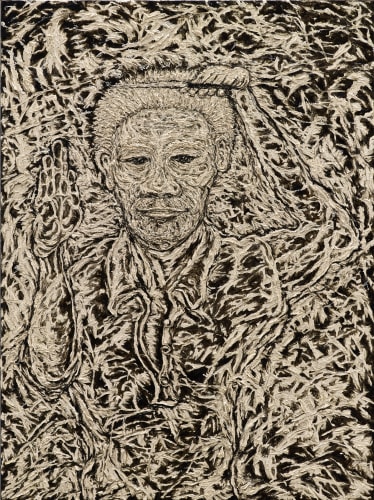Mind Set Art Center is delighted to present a group exhibition “Self-Portrait”, from 8th of April to 6th of May 2017, showing works by 13 artists including Victor Balanon, Shiau-Peng Chen, Marlene Dumas, Tracey Emin, Hsiao Chu-Fang, Jhong Jiang-Ze, Ana Maria Micu, Shi Jin-Hua , Shi Jinsong, Juin Shieh, Melati Suryodarmo, Tang Jo-Hung, Charwei Tsai.
With a long tradition in Art History, self-portrait as a special genre of art has been reflecting the development and transformation of the status and consciousness of artists themselves. As stated by the Founder of Mind Set Art Center, Andre Lee, who curated this exhibition, with the rapid expansions in both expressional methods and aesthetic experiences, Contemporary Art has enable us to look at the long-standing topic of “self-portrait” with new perceptions. Being an expression of the creator’s status, self-portrait in Contemporary Art not only stands for the devotion or projection of the artist as in the traditional way, but also concretizes the essence of a specific soul as well as its pursuit, or creatively represents the self-identity, body experience or cognition.
Amongst the exhibits, The Binding Factor by South African-born artist Marlene Dumas depicts the moment the artist gave birth to her baby girl. Directing at the obstetric canal and newborn, this small-scale watercolor reveals a powerful image. The scene of the newborn and mother connected by the umbilical core right before their physical separation leads us to ponder the mystery of life and unpredictability of the future. Dumas has been famously quoted after the birth of her daughter, “I’m not one of the boys anymore,” indicating that biologically becoming a mother further and forever marks her off from the male gender. The painting has been shown in the exhibition Marlene Dumas: Measuring Your Own Grave at MoMA, New York, 2008-09. Also a self-portrait by a mother, Juin Shieh’s Chora 37 was the first painting she made after suspending oil painting for almost an year due to pregnancy and childbirth, revealing her passionate and unrestrained emotions. The bodily image in the painting takes a caring posture, while the dripping white paint implies breast milk feeding the newborn, which is composed of a smiling face and circles at the lower part of the composition. Chora 37 thus expresses the unspeakable physical and mental transformations blended with pain and joy.
Inspired by observing perennial plants, Ana Maria Micu attempts to make art in a way that would accumulate over time into something, hopefully, better than the sum of its parts, while reflecting her self-existence as an artist. In something banal, she catches a glimpse of a different reality and captures the flowing affairs with drawing and animation, revealing a fantasy world where things move slowly and graciously, like in a dance. On the other hand, Tang Jo-Hung takes up various rolls in his self-portraits, transforming his life experiences as well as the states of body and mind into silence dramas. The scenes created by Tang often seem to hint faintly discernible messages, while wittily imply multiple possibilities of transcending the reality.
Shi Jinsong collected dust from various culturally significant locations and made the dust into materials he would write or draw with, so to represent traces of time and memory. Shi named the dust he collected through various methods “dust of memory”. He made the dust collected from Wuhan into a pigment named “Wuhan Grey”. By painting a self-portrait with “Wuhan Grey” on a mirror, the artist expressed that his series of works derived from the concept of “dust of memory” would eventually return to an introspection. Charwei Tsai’s Etrangere takes the octopus, which resembles an alien, as a metaphor of herself, reflecting her experience of being treated as a foreigner in various parts of the world, even in her homeland Taiwan. Her passport number as shown in the work, becomes the symbolization of her identity as a citizen of Taiwan.
“Self-Portrait” brings works by 13 artists from Asia and other parts of the world in various forms including painting, drawing, prints, photography, conceptual art and mix-media. The exhibition probes into the status and spiritual projection of the creators themselves, and thus takes us on a journey towards the artists’ intrinsic worlds.
Self-Portrait
Past exhibition




